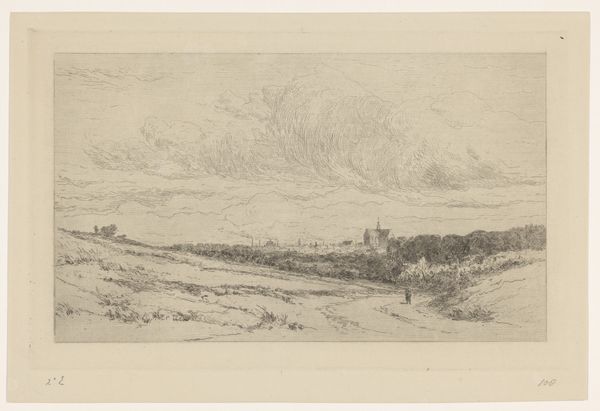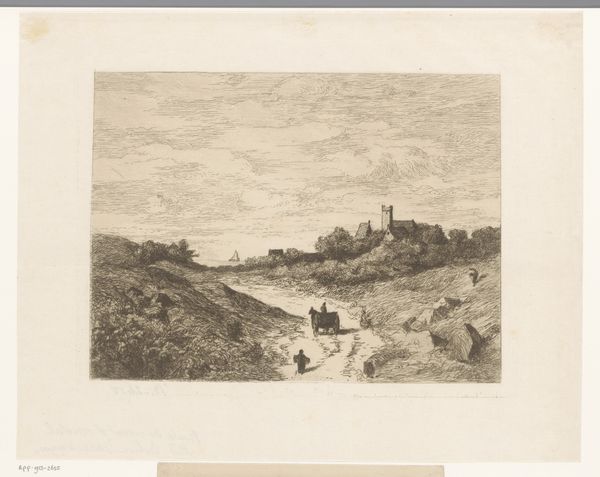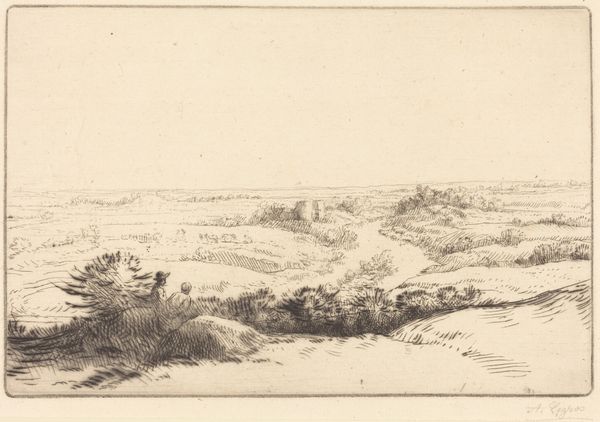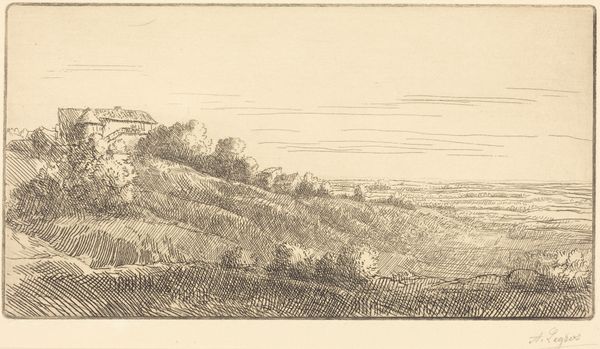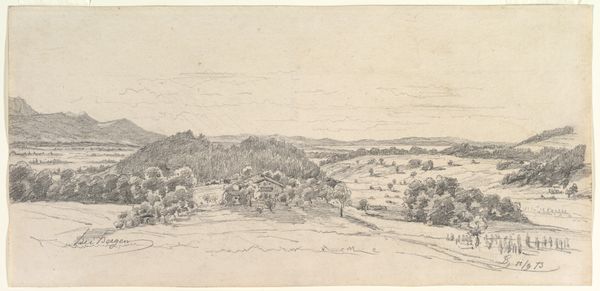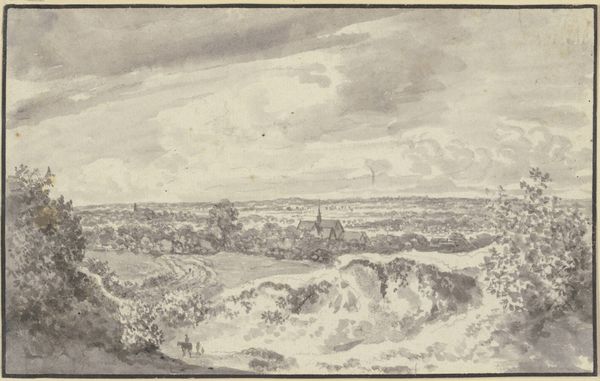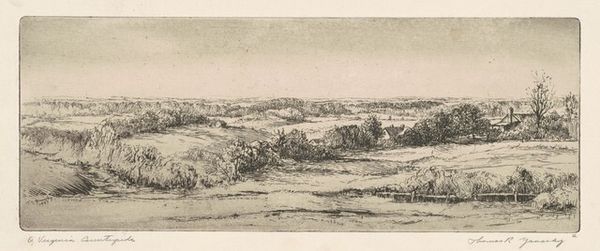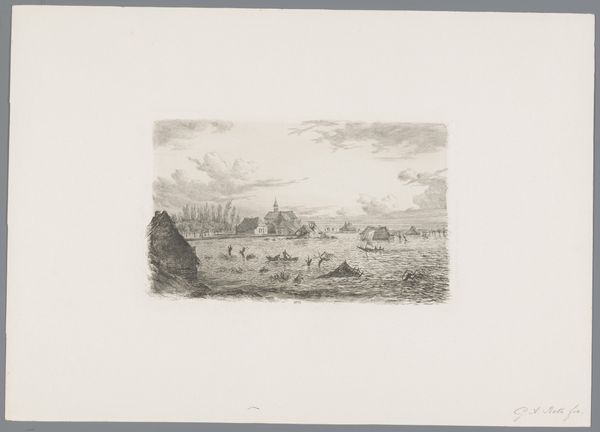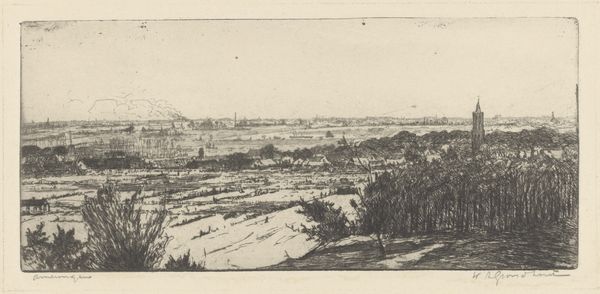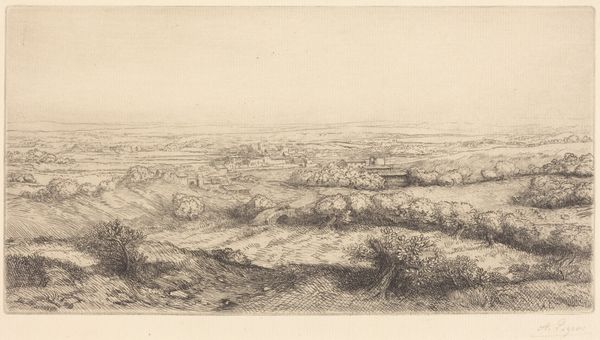
print, etching, engraving
#
dutch-golden-age
# print
#
etching
#
landscape
#
engraving
#
realism
Dimensions: height 59 mm, width 159 mm
Copyright: Rijks Museum: Open Domain
Curator: What an intriguing image! This etching, engraving, and print is entitled "Dorpsgezicht achter wallen van een fortificatie" which roughly translates to "Village View Behind Walls of a Fortification," dating back to 1875 and created by Théodore Tscharner. I am excited to dig into what lies within. Editor: The first thing I notice is this curious little stone archway. It’s kind of a secret portal—beckoning the eye to wander beyond the rigid fortress. Almost like a fairytale illustration. Curator: Ah, a portal indeed! Those fortifications aren’t just physical, though. The walled structure itself is heavy with cultural implications. Walls represent separation and boundaries, defense, and the limitation of free movement. They become powerful symbols throughout history and across societies. Editor: Well, that stone certainly speaks of age and time, a sort of quiet persistence that trumps these "separations". It makes me wonder about the relationship between security and what those inside might lose. This is where a little anarchy thrives! Curator: Yes! The village behind the wall—the domestic space—exists *because* of this militaristic architecture. One enables the other; it suggests a fascinating dependency between contrasting concepts. But consider also, that a symbol is rarely unilateral. Depending on perspective and circumstance, a wall could be sanctuary or it could be prison. Editor: True! Sanctuary or prison. And those dark windows behind that second wall--that row of darkened homes --do they even need it? The walls might represent something else too—the attempt to *contain* nature's disorder, perhaps? The way the wispy vegetation clings regardless intrigues me. Curator: A brilliant observation! Notice also how the image flattens perspective in favor of presenting a totality; it’s not just about a view *from* the walls, but the experience of being both *within* and *without*. This ties into the historical context. Tscharner was working within a rising sense of national identity, looking back towards a golden age of Dutch art, yet firmly planting his style in the emerging realities of his era. Editor: The overall tone evokes a peculiar stillness. Maybe it’s just my interpretation of that period or my romantic projection, but it invites a story. A tale of mundane existence in a space meant to shield, that now perhaps seems... obsolete? Curator: In a way, it anticipates future tensions. Security versus freedom. Defense versus accessibility. The outside versus the inside. And here, in one beautifully rendered etching, those forces meet and create meaning. Editor: Perfectly said. For me, its allure rests on this strange paradox--between fortification and invitation, defense and story! Curator: Precisely! Thank you for walking along with me as we examined this beautiful artwork. I've noticed many new facets within, by having your spontaneous reflections by my side.
Comments
No comments
Be the first to comment and join the conversation on the ultimate creative platform.
